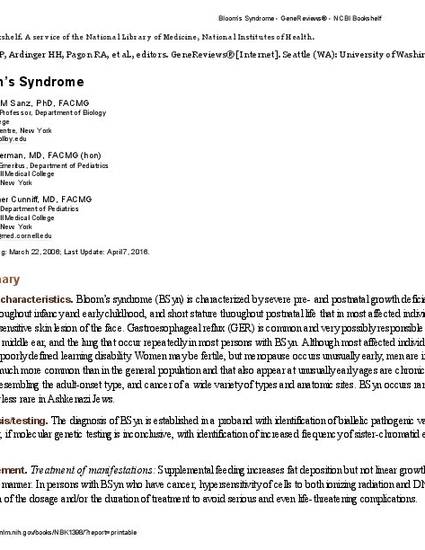
Bloom’s syndrome (BSyn) is characterized by severe pre- and postnatal growth deficiency, sparseness of subcutaneous fat tissue throughout infancy and early childhood, and short stature throughout postnatal life that in most affected individuals is accompanied by an erythematous and sun-sensitive skin lesion of the face. Gastroesophageal reflux (GER) is common and very possibly responsible for infections of the upper respiratory tract, the middle ear, and the lung that occur repeatedly in most persons with BSyn. Although most affected individuals have normal intellectual ability, many exhibit a poorly defined learning disability. Women may be fertile, but menopause occurs unusually early; men are infertile. Serious medical complications that are much more common than in the general population and that also appear at unusually early ages are chronic obstructive pulmonary disease, diabetes mellitus resembling the adult-onset type, and cancer of a wide variety of types and anatomic sites. BSyn occurs rarely in all national and ethnic groups but is relatively less rare in Ashkenazi Jews.
Available at: http://works.bepress.com/maureen-sanz/2/

This PDF was created using the Chrome browser extension. For the most up-to-date version visit http://www.genetests.org